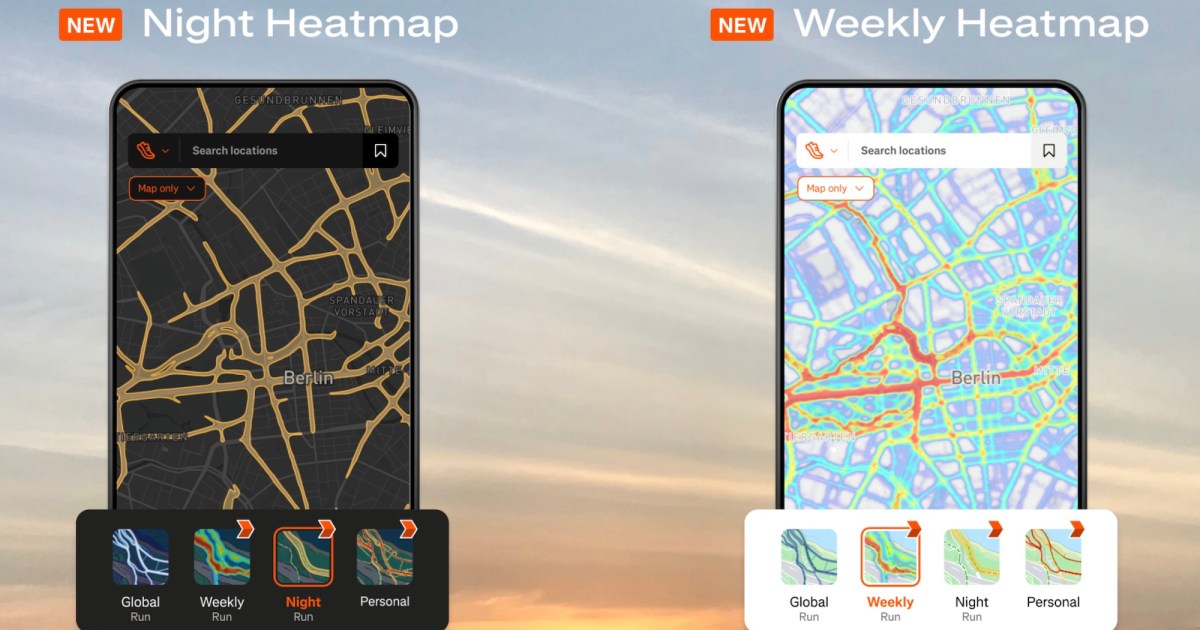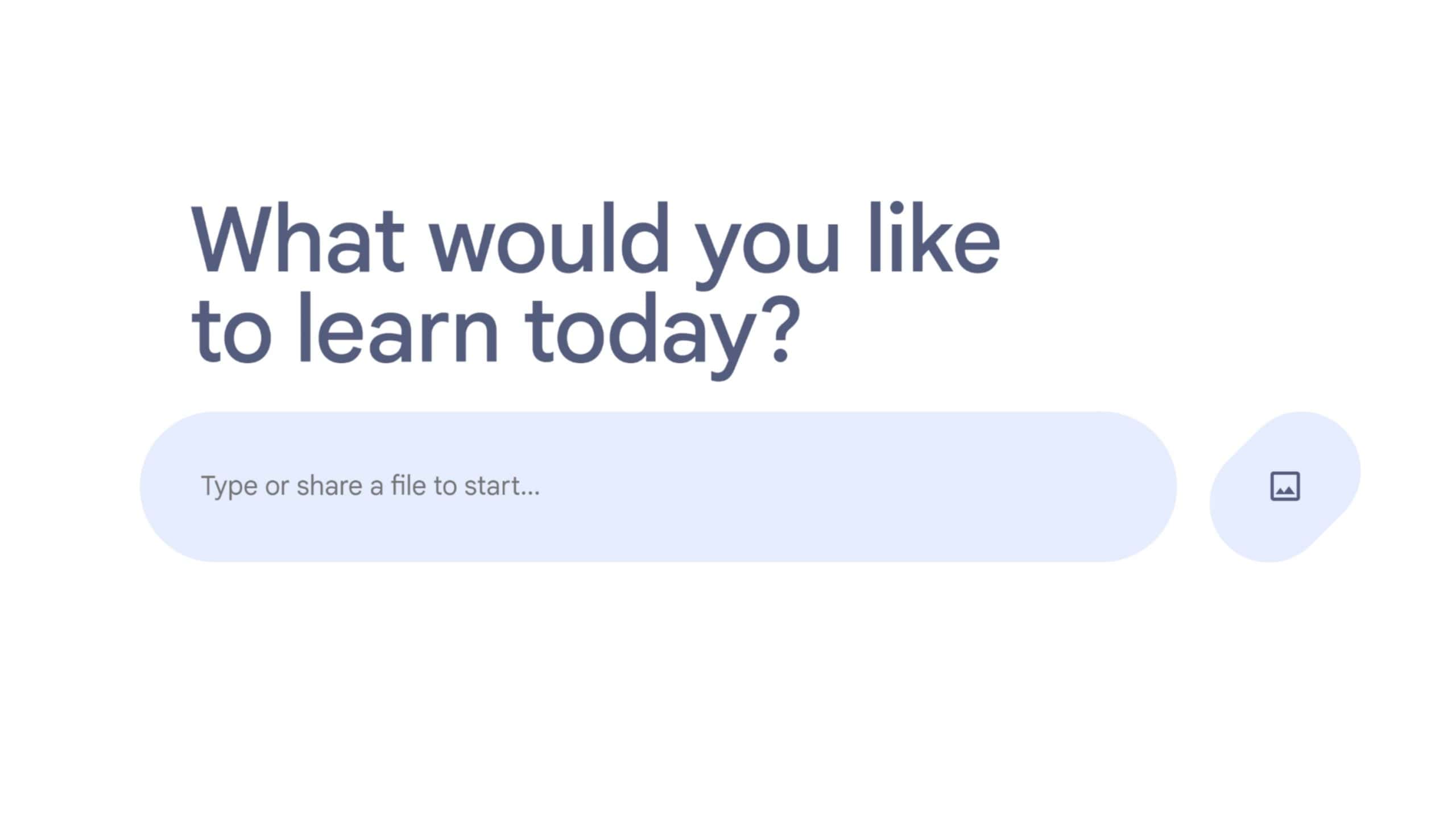At the risk of stating the obvious, AI is absolutely everywhere lately. There’s AI in your car, AI in your messaging app, AI in your glasses. I’ve gotten pretty desensitized to it all as a hazard of the job, but it was Spotify’s AI DJ that actually got my attention.
Technology
Spotify’s AI is no match for a real DJ

I’ve listened to a top 40 radio station in the past two decades, so I’m familiar with the concept of a robot picking music for me. In that context, an AI DJ doesn’t seem like much of a stretch. But after using it on and off for a week, I’m convinced it’s the perfect analogy for our AI-everything moment. It’s eerily human, and it plays a lot of music I like. But take it from someone with access to a high-quality local indie radio station — one that employs human DJs! — there just ain’t nothing like the real thing.
Spotify’s AI DJ has been around since early 2023, but it piqued my interest recently when I was scrounging around the app looking for some work-friendly tunes. The AI voice greeted me by name, then after a little preamble, told me it had some “dream pop and neo-psychedelic waves” picked out. As the music started, I was annoyed at how extremely my shit it was. I shouldn’t have been surprised, considering that Spotify has nearly a decade’s worth of data on my musical listening habits. It drew on my previous listening for the next track, too: a song by Classixx, whose Hanging Gardens album I listened to on repeat last year. But while I listened to Hanging Gardens on Spotify, I didn’t discover it there. I heard it first on KEXP — a local station where real humans pick the music.
See, here in Seattle, we’re extremely spoiled. In between the robot-programmed, conglomerate-owned stations, we have a real honest-to-god independent station on our radio dials: 90.3, to be precise. I started listening to KEXP through their online stream years before I moved to Seattle. Being a local has only made me more of a fan; I celebrated the opening of the “new” KEXP location in 2016 and saw one of my favorite bands play a free in-studio show there not long before they broke up. I’ve logged countless hours working on my laptop in the community gathering space. Being able to walk into my favorite radio station and just like, hang out, remains cool as hell all these years later. I wish every city in the country had a KEXP.
It’s not that I like everything that I hear on KEXP. “The Friday song” is banned in my house because my husband and I are both so sick of it. And as much as I’ve tried, I can’t get into Wet Leg. It’s a me problem. But that’s kind of the point of a radio station, isn’t it? You hear some stuff you like and some stuff you’re not as into. Maybe you hear a song you forgot about but love or a band you dig that you’ve never heard before. It’s a well-rounded meal, while an AI-curated set feels like a dessert buffet. It’s all the stuff you love, and it’s great at first, but then it gives you a stomach ache after a while.
It hits different than when it comes from an algorithm
In the era of Spotify algorithms and top 40 stations, a DJ might seem like an abstract concept. But KEXP’s DJs are very much real people that I see out in the community, emceeing local music festivals and shopping at the co-op grocery store. It’s an obvious but crucial difference. When a real human plays a song you really like because they really like it, too, it hits different than when it comes from an algorithm.
Being on air and sharing music is “a way of connection with thousands of people across the world,” says Evie Stokes, DJ and host of KEXP’s Drive Time. “It’s a great way for me to be honest and have accountability and community that I think we so desperately need.”
Her connection to the audience is built through and alongside the music; Stokes has shared her journey into sobriety with her listeners. “Every time I talk about it on air… I get an influx of messages from folks who are going through similar paths in their life.” That connection simply can’t exist when the only thing running the station is a robot.
One of the downsides of being employed as a writer is that it’s basically impossible for me to listen to the radio while I work. I can’t write to songs with lyrics, and I definitely can’t write while a DJ is talking. So I turn to Spotify a lot during the workday, and I’ve listened to plenty of “lofi” and “smooth jazz beats” playlists while blogging. I’ve used another of Spotify’s AI features, too: AI-created playlists. For the purpose, they’re fine. Best of all, there’s no pretense that a human is picking the music for me. I tell the computer what mood I’m in, and it assembles a playlist of tunes that fit the assignment.
If nothing else, the AI DJ is a kind of totem of the particular AI moment we’re in. Generative AI is buzzy, and tech companies are busy shoving it into every corner of every product they make, whether it has any business being there or not. There’s plenty of stuff AI can do and probably will do for us in the near future. But standing in for a real human, especially in creative applications, isn’t one of them. Take it from the Polish radio station that tried — and failed spectacularly — to replace its human presenters with AI characters.
A podcast is just humans talking to each other
Does anyone actually want an AI DJ calling them by name? Does anybody want an AI-generated DM from their favorite creator? Does anyone want to have a Zoom meeting with your AI avatar? Maybe, but I think the tech executives pushing for more of this stuff are vastly overestimating this demand and underestimating the value that a real human brings to an exchange. People want to listen to podcasts, for Christ’s sake. A podcast is just humans talking to each other. Conceptually, listening to a podcast is about as advanced as gathering round the radio for your favorite program like people did a hundred years ago. Some things are constants.
On the day I started listening to the Spotify AI DJ, I got in the car that afternoon to pick my kid up from daycare. DJ Riz was hosting Drive Time on KEXP, and the first thing I heard him play was “Sunshine, Lollipops and Rainbows” by Lesley Gore, released in 1963. It’s a bop that’s as syrupy-sweet as the candy in its title. Riz followed that up with Love from Mos Def’s 1999 album Black on Both Sides. I’m sure I wouldn’t have listened to either of those songs on my own that afternoon, let alone back to back. But it worked, and the juxtaposition made me smile. You just don’t get that kind of thing from AI.
Technology
Microsoft brings AI to the farm and factory floor, partnering with industry giants

Join our daily and weekly newsletters for the latest updates and exclusive content on industry-leading AI coverage. Learn More
Microsoft has launched a new suite of specialized AI models designed to address specific challenges in manufacturing, agriculture, and financial services. In collaboration with partners such as Siemens, Bayer, Rockwell Automation, and others, the tech giant is aiming to bring advanced AI technologies directly into the heart of industries that have long relied on traditional methods and tools.
These purpose-built models—now available through Microsoft’s Azure AI catalog—represent Microsoft’s most focused effort yet to develop AI tools tailored to the unique needs of different sectors. The company’s initiative reflects a broader strategy to move beyond general-purpose AI and deliver solutions that can provide immediate operational improvements in industries like agriculture and manufacturing, which are increasingly facing pressures to innovate.
“Microsoft is in a unique position to deliver the industry-specific solutions organizations need through the combination of the Microsoft Cloud, our industry expertise, and our global partner ecosystem,” Satish Thomas, Corporate Vice President of Business & Industry Solutions at Microsoft, said in a LinkedIn post announcing the new AI models.
“Through these models,” he added, “we’re addressing top industry use cases, from managing regulatory compliance of financial communications to helping frontline workers with asset troubleshooting on the factory floor — ultimately, enabling organizations to adopt AI at scale across every industry and region… and much more to come in future updates!”
Siemens and Microsoft remake industrial design with AI-powered software
At the center of the initiative is a partnership with Siemens to integrate AI into its NX X software, a widely used platform for industrial design. Siemens’ NX X copilot uses natural language processing to allow engineers to issue commands and ask questions about complex design tasks. This feature could drastically reduce the onboarding time for new users while helping seasoned engineers complete their work faster.
By embedding AI into the design process, Siemens and Microsoft are addressing a critical need in manufacturing: the ability to streamline complex tasks and reduce human error. This partnership also highlights a growing trend in enterprise technology, where companies are looking for AI solutions that can improve day-to-day operations rather than experimental or futuristic applications.
Smaller, faster, smarter: How Microsoft’s compact AI models are transforming factory operations
Microsoft’s new initiative relies heavily on its Phi family of small language models (SLMs), which are designed to perform specific tasks while using less computing power than larger models. This makes them ideal for industries like manufacturing, where computing resources can be limited, and where companies often need AI that can operate efficiently on factory floors.
Perhaps one of the most novel uses of AI in this initiative comes from Sight Machine, a leader in manufacturing data analytics. Sight Machine’s Factory Namespace Manager addresses a long-standing but often overlooked problem: the inconsistent naming conventions used to label machines, processes, and data across different factories. This lack of standardization has made it difficult for manufacturers to analyze data across multiple sites. The Factory Namespace Manager helps by automatically translating these varied naming conventions into standardized formats, allowing manufacturers to better integrate their data and make it more actionable.
While this may seem like a minor technical fix, the implications are far-reaching. Standardizing data across a global manufacturing network could unlock operational efficiencies that have been difficult to achieve.
Early adopters like Swire Coca-Cola USA, which plans to use this technology to streamline its production data, likely see the potential for gains in both efficiency and decision-making. In an industry where even small improvements in process management can translate into substantial cost savings, addressing this kind of foundational issue is a crucial step toward more sophisticated data-driven operations.
Smart farming gets real: Bayer’s AI model tackles modern agriculture challenges
In agriculture, the Bayer E.L.Y. Crop Protection model is poised to become a key tool for farmers navigating the complexities of modern farming. Trained on thousands of real-world questions related to crop protection labels, the model provides farmers with insights into how best to apply pesticides and other crop treatments, factoring in everything from regulatory requirements to environmental conditions.
This model comes at a crucial time for the agricultural industry, which is grappling with the effects of climate change, labor shortages, and the need to improve sustainability. By offering AI-driven recommendations, Bayer’s model could help farmers make more informed decisions that not only improve crop yields but also support more sustainable farming practices.
The initiative also extends into the automotive and financial sectors. Cerence, which develops in-car voice assistants, will use Microsoft’s AI models to enhance in-vehicle systems. Its CaLLM Edge model allows drivers to control various car functions, such as climate control and navigation, even in settings with limited or no cloud connectivity—making the technology more reliable for drivers in remote areas.
In finance, Saifr, a regulatory technology startup within Fidelity Investments, is introducing models aimed at helping financial institutions manage regulatory compliance more effectively. These AI tools can analyze broker-dealer communications to flag potential compliance risks in real-time, significantly speeding up the review process and reducing the risk of regulatory penalties.
Rockwell Automation, meanwhile, is releasing the FT Optix Food & Beverage model, which helps factory workers troubleshoot equipment in real time. By providing recommendations directly on the factory floor, this AI tool can reduce downtime and help maintain production efficiency in a sector where operational disruptions can be costly.
The release of these AI models marks a shift in how businesses can adopt and implement artificial intelligence. Rather than requiring companies to adapt to broad, one-size-fits-all AI systems, Microsoft’s approach allows businesses to use AI models that are custom-built to address their specific operational challenges. This addresses a major pain point for industries that have been hesitant to adopt AI due to concerns about cost, complexity, or relevance to their particular needs.
The focus on practicality also reflects Microsoft’s understanding that many businesses are looking for AI tools that can deliver immediate, measurable results. In sectors like manufacturing and agriculture, where margins are often tight and operational disruptions can be costly, the ability to deploy AI that improves efficiency or reduces downtime is far more appealing than speculative AI projects with uncertain payoffs.
By offering tools that are tailored to industry-specific needs, Microsoft is betting that businesses will prioritize tangible improvements in their operations over more experimental technologies. This strategy could accelerate AI adoption in sectors that have traditionally been slower to embrace new technologies, like manufacturing and agriculture.
Inside Microsoft’s plan to dominate industrial AI and edge computing
Microsoft’s push into industry-specific AI models comes at a time of increasing competition in the cloud and AI space. Rivals like Amazon Web Services and Google Cloud are also investing heavily in AI, but Microsoft’s focus on tailored industry solutions sets it apart. By partnering with established leaders like Siemens, Bayer, and Rockwell Automation, Microsoft is positioning itself to be a key player in the digitization of industries that are under growing pressure to modernize.
The availability of these models through Azure AI Studio and Microsoft Copilot Studio also speaks to Microsoft’s broader vision of making AI accessible not just to tech companies, but to businesses in every sector. By integrating AI into the day-to-day operations of industries like manufacturing, agriculture, and finance, Microsoft is helping to bring AI out of the lab and into the real world.
As global manufacturers, agricultural producers, and financial institutions face increasing pressures from supply chain disruptions, sustainability goals, and regulatory demands, Microsoft’s industry-specific AI offerings could become essential tools in helping them adapt and thrive in a fast-changing world.
Source link
Technology
Lyten buys battery manufacturing assets from beleaguered Northvolt

Lyten, a Silicon Valley battery startup, announced today that it’s acquiring manufacturing assets from Northvolt, a Swedish battery manufacturer that’s facing a cash crunch.
As part of the deal, Northvolt is selling manufacturing equipment the company inherited in its 2021 acquisition of Cuberg, another battery startup. Lyten will also assume the lease of Cuberg’s old manufacturing facility in San Leandro, California. Lyten will invest $20 million next year to expand facilities in San Leandro and its existing operations in San Jose.
Neither Lyten nor Northvolt immediately replied to questions about the deal’s financial terms.
Unlike many other battery manufacturers, Lyten isn’t relying on nickel, cobalt, manganese, or even iron for its cathode materials. Instead, it’s using cheap and abundant sulfur mixed into a graphene matrix. On the anode side, it doesn’t use any graphite, a material that faces export restrictions from China. The company says the combination results in cells that have greater energy density than nickel-manganese-cobalt flavors but are cheaper to produce than low-cost lithium-iron-phosphate.
Northvolt has been struggling lately. The company has struggled to scale up production of lithium-ion batteries, and it missed delivery of a large order from BMW, which nudged the automaker to nullify a €2 billion contract.
To conserve cash, the company announced in August that it would shutter research and development at the Cuberg site, laying off nearly 200 employees. Then in September, it said that it was laying off an additional 1,600 employees, about 20% of its workforce, and that it had halted two planned factory expansions.
It’s unclear whether that cost-cutting and deal with Lyten will be enough to help Northvolt get through the coming year. Last week, Bloomberg reported that Northvolt needs to raise nearly $1 billion to give it some breathing room; the company’s operations reportedly burn through about $100 million a month.
While Northvolt is on the skids, Lyten appears ascendent.
The San Jose-based startup is planning to break ground next year on a factory in Nevada with a planned capacity of 10 gigawatt-hours. When complete, the $1 billion facility will produce lithium-sulfur batteries destined for micromobility vehicles like scooters and e-bikes, and defense and space applications like drones and satellites. The company expects it to come online in 2027.
Lyten’s purchase of Northvolt’s Cuberg assets give it the equipment and space to produce up to 200 megawatt-hours of lithium-sulfur batteries in the Bay Area. That should give the company some revenue while it prepares its larger factory in Nevada.
Lyten has raised $476 million to date at a $1.17 billion valuation, according to PitchBook, including a $200 million round that closed last year.
Technology
OpenAI reportedly plans to launch an AI agent early next year

OpenAI is preparing to release an autonomous AI agent that can control computers and perform tasks independently, code-named “Operator.” The company plans to debut it as a research preview and developer tool in January, according to Bloomberg.
This move intensifies the competition among tech giants developing AI agents: Anthropic recently introduced its “computer use” capability, while Google is reportedly preparing its own version for a December release. The timing of Operator’s eventual consumer release remains under wraps, but its development signals a pivotal shift toward AI systems that can actively engage with computer interfaces rather than just process text and images.
All the leading AI companies have promised autonomous AI agents, and OpenAI has hyped up the possibility recently. In a Reddit “Ask Me Anything” forum a few weeks ago, OpenAI CEO Sam Altman said “we will have better and better models,” but “I think the thing that will feel like the next giant breakthrough will be agents.” At an OpenAI press event ahead of the company’s annual Dev Day last month, chief product officer Kevin Weil said: “I think 2025 is going to be the year that agentic systems finally hit the mainstream.”
AI labs face mounting pressure to monetize their costly models, especially as incremental improvements may not justify higher prices for users. The hope is that autonomous agents are the next breakthrough product — a ChatGPT-scale innovation that validates the massive investment in AI development.
Technology
Robotic AI performs successful surgery after watching videos for training

Watching old episodes of ER won’t make you a doctor, but watching videos may be all the training a robotic surgeon’s AI brain needs to sew you up after a procedure. Researchers at Johns Hopkins University and Stanford University have published a new paper showing off a surgical robot as capable as a human in carrying out some procedures after simply watching humans do so.
The research team tested their idea with the popular da Vinci Surgical System, which is often used for non-invasive surgery. Programming robots usually requires manually inputting every movement that you want them to make. The researchers bypassed this using imitation learning, a technique that implanted human-level surgical skills in the robots by letting them observe how humans do it.
The researchers put together hundreds of videos recorded from wrist-mounted cameras demonstrating how human doctors do three particular tasks: needle manipulation, tissue lifting, and suturing. The researchers essentially used the kind of training ChatGPT and other AI models use, but instead of text, the model absorbed information about the way human hands and the tools they are holding move. This kinematic data essentially turns movement into math the model can apply to carry out the procedures upon request. After watching the videos, the AI model could use the da Vinci platform to mimic the same techniques. It’s not too dissimilar from how Google is experimenting with teaching AI-powered robots to navigate spaces and complete tasks by showing them videos.

Surgical AI
“It’s really magical to have this model and all we do is feed it camera input and it can predict the robotic movements needed for surgery. We believe this marks a significant step forward toward a new frontier in medical robotics,” senior author and JHU assistant professor Axel Krieger said in a release. “The model is so good learning things we haven’t taught it. Like if it drops the needle, it will automatically pick it up and continue. This isn’t something I taught it do.”
The idea of an AI-controlled robot holding blades and needles around your body might sound scary, but the precision of machines can make them better in some cases than human doctors. Robotic surgery is increasingly common in some instances. A robot performing complex procedures independently might actually be safer, with fewer medical errors. Human doctors could have more time and energy to focus on unexpected complications and the more difficult parts of a surgery that machines aren’t up to handling yet.
The researchers have plans to test using the same techniques to teach an AI how to do a complete surgery. They’re not alone in pursuing the idea of AI-assisted robotic healthcare. Earlier this year, AI dental technology developer Perceptive showcased the success of an AI-guided robot performing a dental procedure on a human without supervision.
You might also like
Technology
Strava adds Night and Weekly Heatmaps to its fitness app


Strava, a popular app for tracking fitness activities, is expanding its Hatmaps feature to help improve the safety of its users. The update should be especially useful now for users in the Northern Hemisphere, which is heading into winter with reduced daylight.
The new Night and Weekly Heatmaps were announced by the San Francisco-based company on Wednesday and are available to all Strava subscribers. As the name of the feature suggests, the Heatmaps show where Strava users are choosing to exercise, with dark thick lines showing well-used routes, and light thin lines showing less popular ones.
First up, the new Night Heatmaps feature is ideal for those who are doing their activities in the late evening or early morning hours, when there’s less light. They show the most popular areas for outdoor activities from sunset to sunrise, helping athletes to better plan their outdoor activities during this time frame. If it’s a new area for you, you may also want to cross-check the Night Heatmap data with Google Street View images to get a better understanding of the place.
Weekly Heatmaps, on the other hand, show data for recent heat from the last seven days so that users can see which trails and roads are currently active, particularly during seasonal transitions when conditions may be impacted by weather.
“Our global community powers ourHeatmaps and now we’ve made it easier for our community members to build routes with confidence, regardless of the season or time of day,” Matt Salazar, Strava’s chief product officer, said in Wednesday’s announcement about the new features. “We are continually improving our mapping technology to make human-powered movement easier for all skill levels.”
Strava has also shared a useful at-a-glance guide to all four of its Heatmaps, Night, Weekly, Global, and Personal:
Night (new): Discover the most frequented areas between sunset and sunrise; ideal for evening or early morning users.
Weekly (new): Stay updated with the latest data from the past seven days; perfect for adjusting plans around seasonal changes or unexpected closures.
Global (existing): Viewable by anyone regardless of whether you have a Strava account, the Global Heatmap allows you to see what areas are most popular around the world based on community activity uploads.
Personal (existing): A one-of-a-kind illustration showing the record of everywhere you’ve logged a GPS activity. This heatmap is private and only available to you.
Technology
Google’s new AI model is here to help you learn

Google’s Gemini is useful as an educational tool to help you study for that exam. However, Gemini is sort of the “Everything chatbot” that’s useful for just about everything. Well, Google has a new model for people looking for more of a robust educational tool. Google calls it Learn About, and it could give other tools a run for their money.
Say what you want about Google’s AI, the company has been hard at work making AI tools centered around teaching rather than cheating. For example, it has tools in Android studio that guides programmers and help them learn coding. Also, we can’t forget about NotebookLM. This is the tool that takes your uploaded educational content and helps you digest it. We can’t forget abou the Audio Overviews feature that turns your uploaded media into a live podcast-style educational discussion.
So, Google has a strong focus on education with its AI tools. Let’s just hope that other companies will follow suit.
Google’s new AI tool is called Learn About
This tool is pretty self-explanatory, as it focus on giving you more text-book style explanations for your questions. Rather than simply giving you answers, this tool will go the extra mile to be more descriptive with its explanation. Along with that, Learn About will also provide extra context on the subject and give you other educational material on it.
Google achieved this by using a totally different model to power this tool. Rather than using the Gemini model, Ask About uses a model called LearnLM. At this point, we don’t really know much about this model, but we know that Google steered it more towards providing academic answers.
Gemini’s answer vs. Learn About’s answers
We tested it out by asking what pulsars are, and we compared the answer to what Gemini gave us for the same question. Gemini delivered a pretty fleshed-out explanation in the form of a few paragraphs. It also snagged a few pictures from the internet and pasted the link to a page at the bottom. This is good for a person who’s casually looking up a definition. Maybe that person isn’t looking to learn the ins and outs of what a pulsar is.
There was one issue with Gemini’s answer; one of the images that it pasted was an image of a motorcycle. It pasted an image of the Bajaj Pulsar 150. So, while it technically IS a pulsar, a motorcycle shares very few similarities with massive rapidly spinning balls of superheated plasma billions of miles away from Earth.
What about Learn About?
Learn About also gave an explanation in the form of a few paragraphs; however, Learn About’s explanation was shorter. It makes up for it by producing more extraneous material. Along with images, it provided three links (one of which was a YouTube video) and chips with commands like Simplify, Go deeper, and Get images (more on the chips below).
Under the chips, you’ll see suggestions of other queries that you can put in for additional context. Lastly, in textbook style, you’ll see colored blocks with additional content. For example, there’s a Why it matters block and a Stop & think block.
Chips
Going back to the aforementioned chips, selecting Simplify and Get images are axiomatic enough. Tapping/clicking on the Go Deeper chip is a bit more interesting. It brought up an Interactive List consisting of a selection of additional queries that will provide extra information about pulsars. Each query you select will bring up even more information.

Textbook blocks
Think about the textbooks you used in school, and you’ll be familiar with these blocks. These blocks come in different colors. The Why it matters block tells you why this information is important. Next, the Stop & think block seems to give you a little bit of tangential information. It asks a question and has a button to reveal the answer. It’s a way to get you to think outside of the box a bit.
There’s a Build your vocab box that introduces you to a relevant term and shows you a dictionary-style definition of it. This is a term that the reader is most likely not familiar with.
The next block we encountered was the Test your knowledge block. This one has a quiz-style question and it gives you two options. Other subject matters might have more choices, but this is what we got in our usage.
We also saw a Common misconception block. This one pretty much explains itself.
Bottom bar
At the very bottom of the screen, you’ll see a bar with some additional chips. One chip should show the title of the current subject, and Tapping/clicking on it will bring up a floating window with additional topic suggestions. In our case, we also saw the interactive list that we saw previously. This one will show the list in a floating window.
One issue
So, do you remember when Gemini gave us the image of the motorcycles? Well, while the majority of Learn About’s images were relevant to the subject, it still retrieved two images of the motorcycles. As comical as it is, it shows that Google’s AI still has a ways to go before it’s perfect. However, barring that little mishap, Learn About runs as smoothly as the motorcycle it’s surfacing pictures of.
Use it today!
You can use Learn About today if you want to try it out. Just go to the Learn About website Learn About website, and you’ll be able to try it out. Just know that, as with most Google services, the availability will depend on your region. We were able to access it in the U.S. in English. Just know that you may not have it in regions that Google typically overlooks.
You can use it regardless of if you’re a free or paid user. Please note that Learn About is technically an experiment. This means that Google only put this on the market for testing. Google could potentially lock this behind a paywall after the beta testing phase. Just know that this feature could disappear down the line. So, you’ll want to get in and use it while you can.
-

 Science & Environment2 months ago
Science & Environment2 months agoHow to unsnarl a tangle of threads, according to physics
-

 Technology2 months ago
Technology2 months agoWould-be reality TV contestants ‘not looking real’
-

 Technology2 months ago
Technology2 months agoIs sharing your smartphone PIN part of a healthy relationship?
-

 Science & Environment2 months ago
Science & Environment2 months agoHyperelastic gel is one of the stretchiest materials known to science
-

 Science & Environment2 months ago
Science & Environment2 months ago‘Running of the bulls’ festival crowds move like charged particles
-

 Science & Environment2 months ago
Science & Environment2 months agoX-rays reveal half-billion-year-old insect ancestor
-

 Science & Environment2 months ago
Science & Environment2 months agoPhysicists have worked out how to melt any material
-

 News1 month ago
News1 month ago‘Blacks for Trump’ and Pennsylvania progressives play for undecided voters
-

 MMA1 month ago
MMA1 month ago‘Dirt decision’: Conor McGregor, pros react to Jose Aldo’s razor-thin loss at UFC 307
-

 News1 month ago
News1 month agoWoman who died of cancer ‘was misdiagnosed on phone call with GP’
-

 Money1 month ago
Money1 month agoWetherspoons issues update on closures – see the full list of five still at risk and 26 gone for good
-

 Sport1 month ago
Sport1 month agoAaron Ramsdale: Southampton goalkeeper left Arsenal for more game time
-

 Football1 month ago
Football1 month agoRangers & Celtic ready for first SWPL derby showdown
-

 Sport1 month ago
Sport1 month ago2024 ICC Women’s T20 World Cup: Pakistan beat Sri Lanka
-
Business1 month ago
how UniCredit built its Commerzbank stake
-

 Science & Environment2 months ago
Science & Environment2 months agoA new kind of experiment at the Large Hadron Collider could unravel quantum reality
-

 Science & Environment2 months ago
Science & Environment2 months agoMaxwell’s demon charges quantum batteries inside of a quantum computer
-

 Science & Environment2 months ago
Science & Environment2 months agoSunlight-trapping device can generate temperatures over 1000°C
-

 Science & Environment2 months ago
Science & Environment2 months agoLiquid crystals could improve quantum communication devices
-

 Technology1 month ago
Technology1 month agoUkraine is using AI to manage the removal of Russian landmines
-

 Technology1 month ago
Technology1 month agoSamsung Passkeys will work with Samsung’s smart home devices
-
Business1 month ago
Top shale boss says US ‘unusually vulnerable’ to Middle East oil shock
-

 Science & Environment2 months ago
Science & Environment2 months agoQuantum forces used to automatically assemble tiny device
-

 Science & Environment2 months ago
Science & Environment2 months agoLaser helps turn an electron into a coil of mass and charge
-

 MMA1 month ago
MMA1 month agoPereira vs. Rountree prediction: Champ chases legend status
-

 News1 month ago
News1 month agoNavigating the News Void: Opportunities for Revitalization
-

 News1 month ago
News1 month agoMassive blasts in Beirut after renewed Israeli air strikes
-

 Science & Environment2 months ago
Science & Environment2 months agoWhy this is a golden age for life to thrive across the universe
-

 Technology2 months ago
Technology2 months agoRussia is building ground-based kamikaze robots out of old hoverboards
-

 Technology1 month ago
Technology1 month agoGmail gets redesigned summary cards with more data & features
-

 News1 month ago
News1 month agoCornell is about to deport a student over Palestine activism
-

 Technology1 month ago
Technology1 month agoSingleStore’s BryteFlow acquisition targets data integration
-

 Science & Environment2 months ago
Science & Environment2 months agoQuantum ‘supersolid’ matter stirred using magnets
-

 Technology2 months ago
Technology2 months agoMicrophone made of atom-thick graphene could be used in smartphones
-

 Sport1 month ago
Sport1 month agoBoxing: World champion Nick Ball set for Liverpool homecoming against Ronny Rios
-

 Entertainment1 month ago
Entertainment1 month agoBruce Springsteen endorses Harris, calls Trump “most dangerous candidate for president in my lifetime”
-

 Technology1 month ago
Technology1 month agoEpic Games CEO Tim Sweeney renews blast at ‘gatekeeper’ platform owners
-

 Sport1 month ago
Sport1 month agoShanghai Masters: Jannik Sinner and Carlos Alcaraz win openers
-

 Money1 month ago
Money1 month agoTiny clue on edge of £1 coin that makes it worth 2500 times its face value – do you have one lurking in your change?
-

 Business1 month ago
Business1 month agoWater companies ‘failing to address customers’ concerns’
-

 MMA1 month ago
MMA1 month agoPennington vs. Peña pick: Can ex-champ recapture title?
-

 Technology2 months ago
Technology2 months agoMeta has a major opportunity to win the AI hardware race
-

 MMA1 month ago
MMA1 month agoDana White’s Contender Series 74 recap, analysis, winner grades
-

 MMA1 month ago
MMA1 month agoKayla Harrison gets involved in nasty war of words with Julianna Pena and Ketlen Vieira
-

 Sport1 month ago
Sport1 month agoAmerica’s Cup: Great Britain qualify for first time since 1964
-

 Technology1 month ago
Technology1 month agoMicrosoft just dropped Drasi, and it could change how we handle big data
-

 Technology1 month ago
Technology1 month agoLG C4 OLED smart TVs hit record-low prices ahead of Prime Day
-

 Science & Environment2 months ago
Science & Environment2 months agoITER: Is the world’s biggest fusion experiment dead after new delay to 2035?
-

 News2 months ago
News2 months ago▶️ Hamas in the West Bank: Rising Support and Deadly Attacks You Might Not Know About
-

 News1 month ago
News1 month agoHarry vs Sun publisher: ‘Two obdurate but well-resourced armies’
-

 Sport1 month ago
Sport1 month agoWXV1: Canada 21-8 Ireland – Hosts make it two wins from two
-

 MMA1 month ago
MMA1 month ago‘Uncrowned queen’ Kayla Harrison tastes blood, wants UFC title run
-

 Football1 month ago
Football1 month ago'Rangers outclassed and outplayed as Hearts stop rot'
-

 Science & Environment2 months ago
Science & Environment2 months agoNerve fibres in the brain could generate quantum entanglement
-

 Science & Environment2 months ago
Science & Environment2 months agoNuclear fusion experiment overcomes two key operating hurdles
-

 Technology2 months ago
Technology2 months agoWhy Machines Learn: A clever primer makes sense of what makes AI possible
-

 Technology2 months ago
Technology2 months agoUniversity examiners fail to spot ChatGPT answers in real-world test
-
Travel1 month ago
World of Hyatt welcomes iconic lifestyle brand in latest partnership
-

 Sport1 month ago
Sport1 month agoNew Zealand v England in WXV: Black Ferns not ‘invincible’ before game
-

 News1 month ago
News1 month agoRwanda restricts funeral sizes following outbreak
-

 Technology1 month ago
Technology1 month agoCheck, Remote, and Gusto discuss the future of work at Disrupt 2024
-

 Sport1 month ago
Sport1 month agoURC: Munster 23-0 Ospreys – hosts enjoy second win of season
-

 TV1 month ago
TV1 month agoসারাদেশে দিনব্যাপী বৃষ্টির পূর্বাভাস; সমুদ্রবন্দরে ৩ নম্বর সংকেত | Weather Today | Jamuna TV
-
Business1 month ago
It feels nothing like ‘fine dining’, but Copenhagen’s Kadeau is a true gift
-
Business1 month ago
Italy seeks to raise more windfall taxes from companies
-
Business1 month ago
The search for Japan’s ‘lost’ art
-

 Business1 month ago
Business1 month agoWhen to tip and when not to tip
-

 News1 month ago
News1 month agoHull KR 10-8 Warrington Wolves – Robins reach first Super League Grand Final
-

 Sport1 month ago
Sport1 month agoPremiership Women’s Rugby: Exeter Chiefs boss unhappy with WXV clash
-
Politics1 month ago
‘The night of the living dead’: denial-fuelled Tory conference ends without direction | Conservative conference
-

 Science & Environment2 months ago
Science & Environment2 months agoA tale of two mysteries: ghostly neutrinos and the proton decay puzzle
-

 MMA1 month ago
MMA1 month agoHow to watch Salt Lake City title fights, lineup, odds, more
-

 MMA1 month ago
MMA1 month agoStephen Thompson expects Joaquin Buckley to wrestle him at UFC 307
-

 Sport1 month ago
Sport1 month agoHow India became a Test cricket powerhouse
-

 Sport1 month ago
Sport1 month agoSnooker star Shaun Murphy now hits out at Kyren Wilson after war of words with Mark Allen
-

 Sport1 month ago
Sport1 month agoFans say ‘Moyes is joking, right?’ after his bizarre interview about under-fire Man Utd manager Erik ten Hag goes viral
-

 Science & Environment2 months ago
Science & Environment2 months agoA slight curve helps rocks make the biggest splash
-

 Technology1 month ago
Technology1 month agoNintendo’s latest hardware is not the Switch 2
-

 News1 month ago
News1 month agoCrisis in Congo and Capsizing Boats Mediterranean
-

 Money1 month ago
Money1 month agoThe four errors that can stop you getting £300 winter fuel payment as 880,000 miss out – how to avoid them
-

 TV1 month ago
TV1 month agoTV Patrol Express September 26, 2024
-

 Football1 month ago
Football1 month agoFifa to investigate alleged rule breaches by Israel Football Association
-

 Football1 month ago
Football1 month agoWhy does Prince William support Aston Villa?
-

 News1 month ago
News1 month ago▶ Hamas Spent $1B on Tunnels Instead of Investing in a Future for Gaza’s People
-

 Technology1 month ago
Technology1 month agoSamsung Galaxy Tab S10 won’t get monthly security updates
-

 News2 months ago
News2 months ago▶️ Media Bias: How They Spin Attack on Hezbollah and Ignore the Reality
-

 Science & Environment2 months ago
Science & Environment2 months agoHow to wrap your mind around the real multiverse
-

 News1 month ago
News1 month agoUK forces involved in response to Iran attacks on Israel
-

 Technology1 month ago
Technology1 month agoMusk faces SEC questions over X takeover
-

 Sport1 month ago
Sport1 month agoChina Open: Carlos Alcaraz recovers to beat Jannik Sinner in dramatic final
-
Business1 month ago
Bank of England warns of ‘future stress’ from hedge fund bets against US Treasuries
-

 Technology1 month ago
Technology1 month agoJ.B. Hunt and UP.Labs launch venture lab to build logistics startups
-

 Sport1 month ago
Sport1 month agoSturm Graz: How Austrians ended Red Bull’s title dominance
-

 Sport1 month ago
Sport1 month agoBukayo Saka left looking ‘so helpless’ in bizarre moment Conor McGregor tries UFC moves on Arsenal star
-

 Sport1 month ago
Sport1 month agoCoco Gauff stages superb comeback to reach China Open final
-

 Sport1 month ago
Sport1 month agoMan Utd fans prepare for ‘unholy conversations’ as Scott McTominay takes just 25 seconds to score for Napoli again
-

 Sport1 month ago
Sport1 month agoPhil Jones: ‘I had to strip everything back – now management is my focus’
-

 Sport4 weeks ago
Sport4 weeks agoSunderland boss Regis Le Bris provides Jordan Henderson transfer update 13 years after £20m departure to Liverpool
-

 Womens Workouts2 months ago
Womens Workouts2 months ago3 Day Full Body Women’s Dumbbell Only Workout
-

 Science & Environment2 months ago
Science & Environment2 months agoTime travel sci-fi novel is a rip-roaringly good thought experiment

You must be logged in to post a comment Login